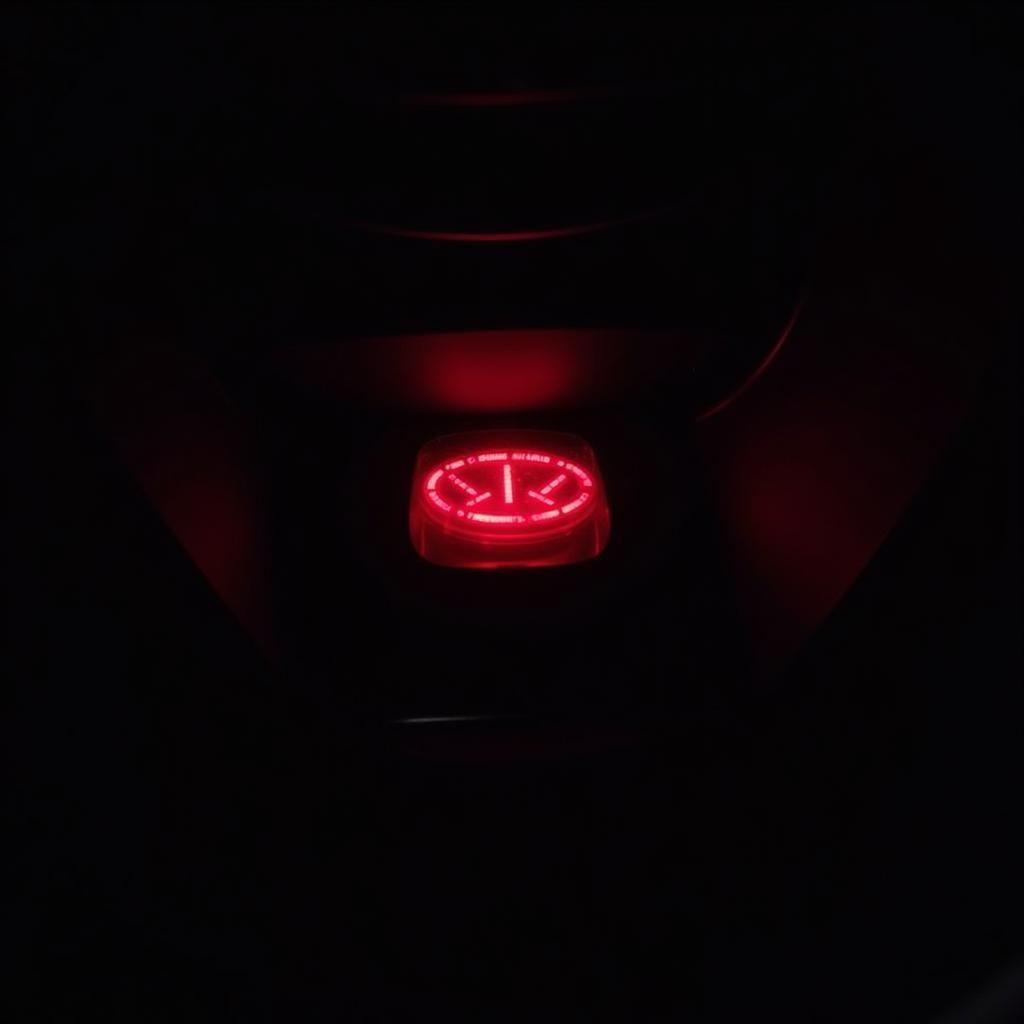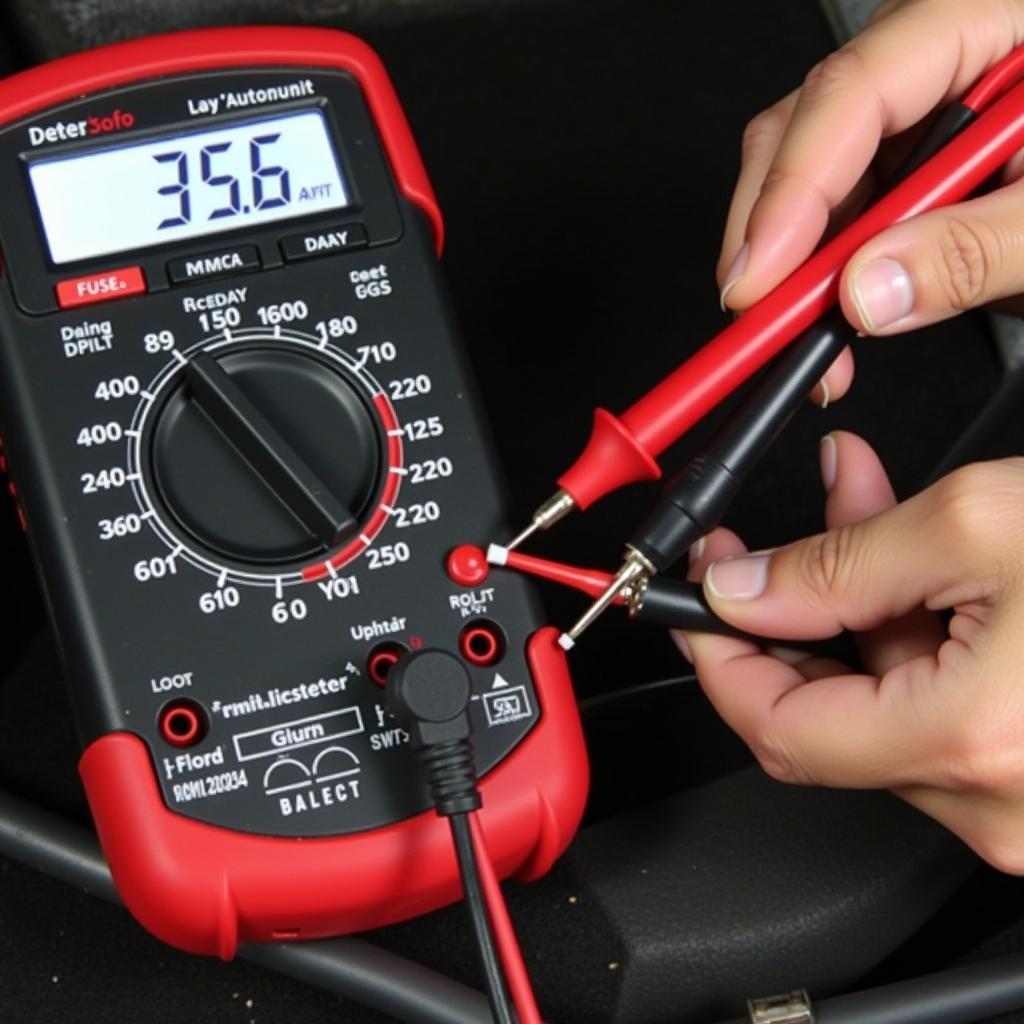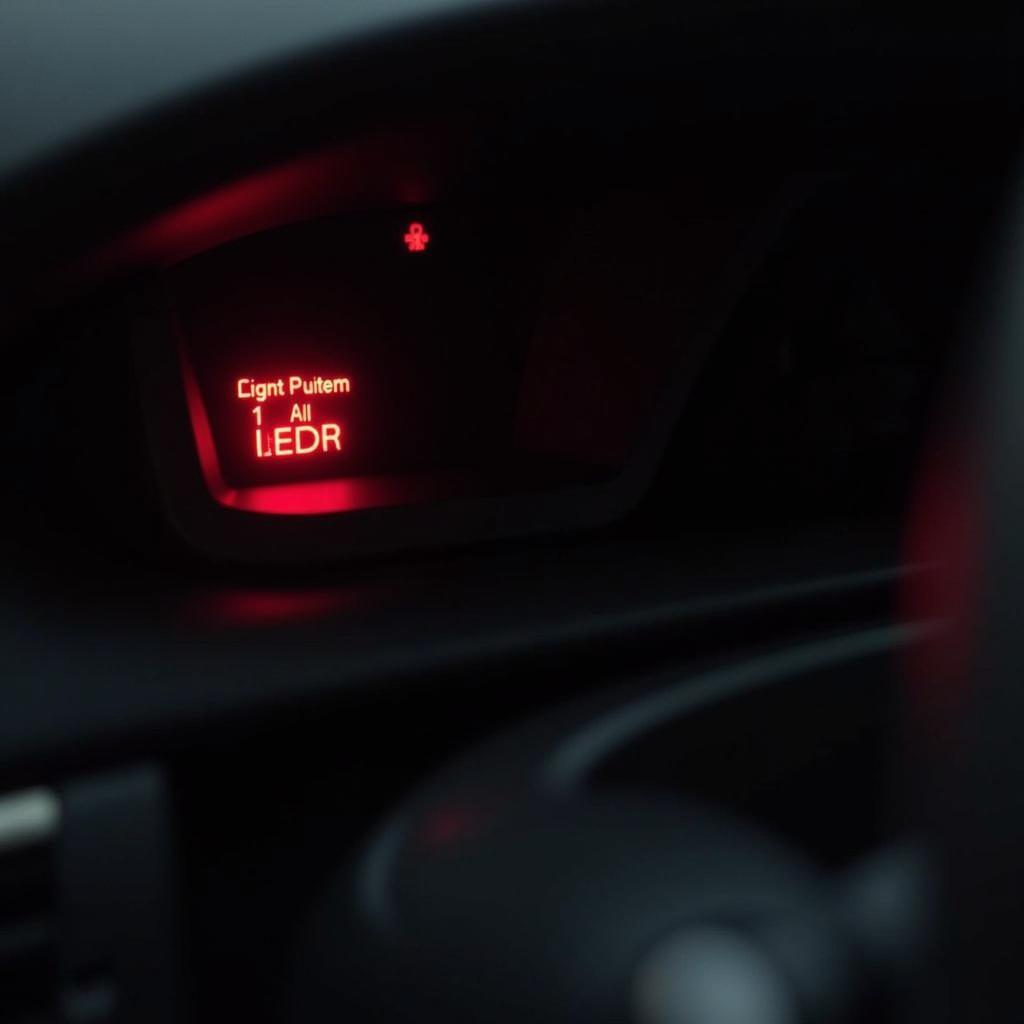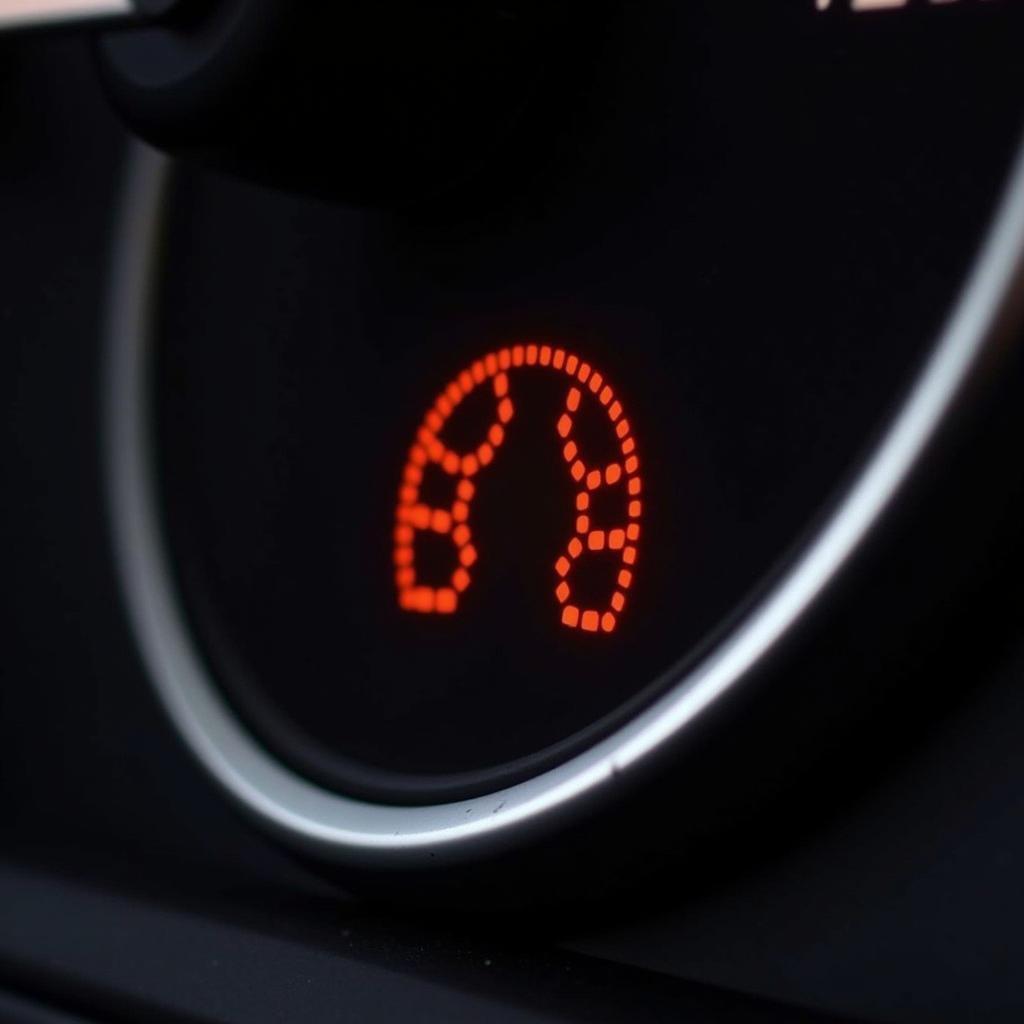The red brake warning lamp on your dashboard is a crucial safety feature, alerting you to potential issues within your braking system. When this lamp illuminates, it’s essential to address the problem promptly. One possible culprit behind a glowing red brake warning lamp is a blown fuse. This article delves into the common causes, troubleshooting steps, and solutions related to a “red brake warning lamp fuse” issue.
 Red Brake Warning Lamp on Dashboard
Red Brake Warning Lamp on Dashboard
Understanding the Brake Warning Lamp and Fuse
The red brake warning lamp is designed to activate in several situations, including:
- Engaged Parking Brake: The most frequent reason for the lamp to illuminate is an engaged parking brake. Always ensure your parking brake is fully released before driving.
- Low Brake Fluid Level: A drop in brake fluid level, often due to a leak, can trigger the warning lamp. Maintaining the proper brake fluid level is crucial for safe braking performance.
- Brake System Malfunction: A problem within the hydraulic system, such as a faulty brake line or master cylinder, can also cause the warning light.
- Blown Brake Lamp Fuse: The brake warning system often shares a circuit with your brake lights. A blown fuse in this circuit can disrupt both systems.
Why a Blown Fuse Occurs
A fuse acts as a safety device, protecting electrical circuits from overloads. When the current flowing through a fuse exceeds its rated capacity, the fuse melts, interrupting the flow and preventing damage to wiring and components. In the case of the red brake warning lamp fuse, a blown fuse can be caused by:
- Short Circuit: A short circuit occurs when a bare wire or a faulty component creates an unintended path for electricity to flow, leading to a sudden surge in current that blows the fuse.
- Overloaded Circuit: Connecting too many devices to a single circuit or using devices that draw excessive current can overload the circuit and cause the fuse to blow.
- Worn Wiring: Over time, wiring insulation can deteriorate, leading to exposed wires. These exposed wires can create short circuits and blow fuses.
Troubleshooting a Red Brake Warning Lamp Fuse
Before assuming the fuse is the culprit, rule out other possibilities:
- Check the Parking Brake: Ensure your parking brake is fully disengaged.
- Inspect Brake Fluid: Check the brake fluid level in the reservoir. If it’s low, there might be a leak.
- Inspect Brake Lights: Ask someone to press the brake pedal while you check if all brake lights are functioning correctly.
If these checks don’t reveal the issue, it’s time to inspect the fuse:
- Locate the Fuse Box: Consult your vehicle’s owner’s manual to find the fuse box location. It’s often under the dashboard, in the glove compartment, or under the hood.
- Identify the Correct Fuse: The owner’s manual will have a diagram identifying the specific fuse for the brake warning lamp and brake lights.
- Inspect the Fuse: Carefully remove the fuse using a fuse puller or pliers. Visually inspect the fuse. A blown fuse will have a broken wire or a darkened appearance.
 Checking Automotive Fuse with Multimeter
Checking Automotive Fuse with Multimeter
Replacing a Blown Fuse
If you’ve identified a blown fuse:
- Obtain the Correct Replacement: Use only the specified amperage fuse as indicated on the fuse box cover or in your owner’s manual. Using a higher amperage fuse can be dangerous and increase the risk of fire.
- Install the New Fuse: Carefully align the new fuse with the fuse holder and gently push it into place. Ensure it’s securely seated.
- Test the System: Turn on the ignition and depress the brake pedal. The red brake warning lamp should turn off, and your brake lights should function correctly.
“Remember, while replacing a blown fuse might seem straightforward, it’s crucial to address the underlying cause. A blown fuse is a symptom of a potential electrical issue. If the fuse blows again shortly after replacement, it indicates a more serious problem that requires professional attention,” advises automotive electrical expert, David Miller, ASE Certified Master Technician.
When to Seek Professional Help
While a blown fuse is often a simple fix, certain situations warrant professional assistance:
- Recurring Blown Fuses: If the fuse blows again soon after replacement, there’s likely an underlying electrical fault requiring diagnosis and repair by a qualified mechanic.
- Difficulty Locating the Fuse: If you’re unable to locate the correct fuse or are uncomfortable working with electrical components, it’s best to err on the side of caution and seek professional help.
- Complex Electrical Issues: If the fuse replacement doesn’t resolve the red brake warning lamp issue, there might be a more complex electrical problem within the braking system that needs professional diagnosis and repair.
Conclusion
A glowing red brake warning lamp is a serious safety concern that should never be ignored. While a blown fuse might be a relatively minor issue, it’s crucial to approach the situation with caution and take the necessary steps to troubleshoot and resolve the problem effectively. Remember, a properly functioning braking system is paramount for your safety and the safety of others on the road. If you’re ever in doubt, seeking professional assistance is always the recommended course of action.


